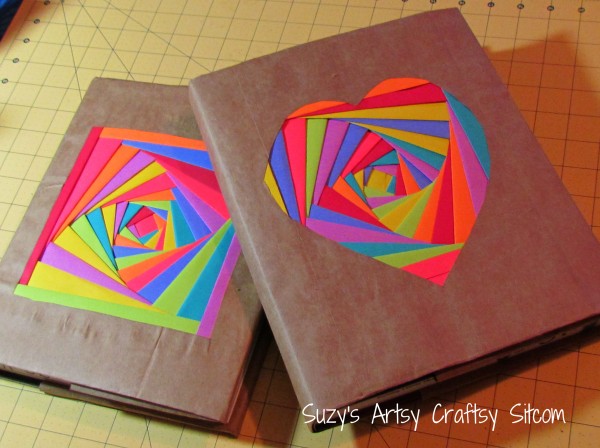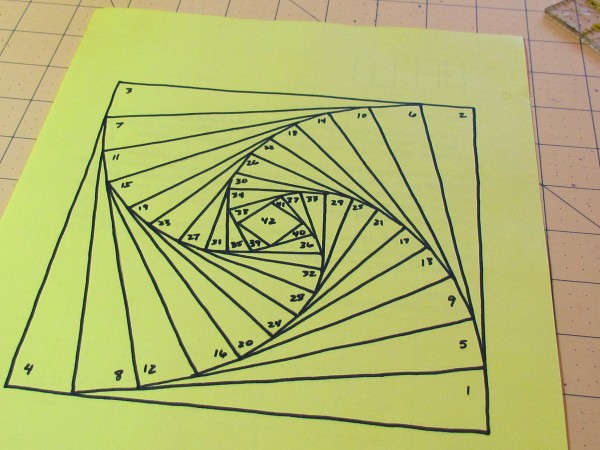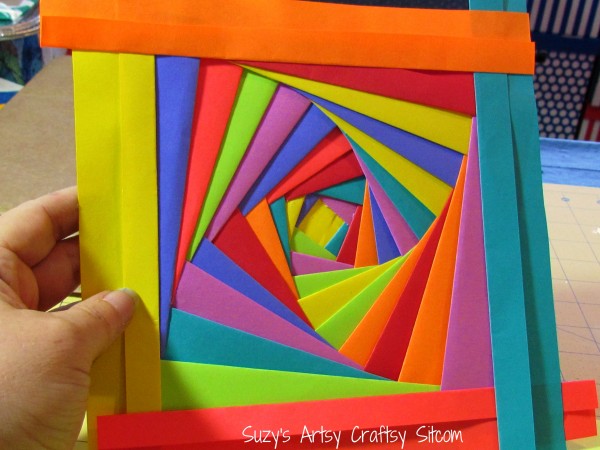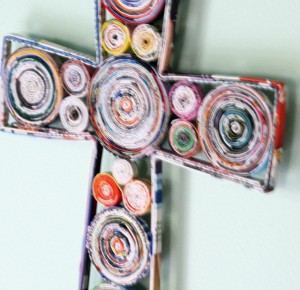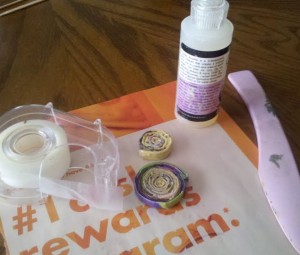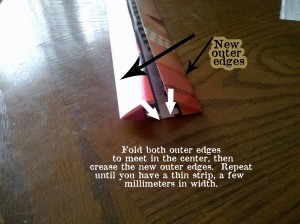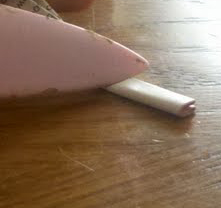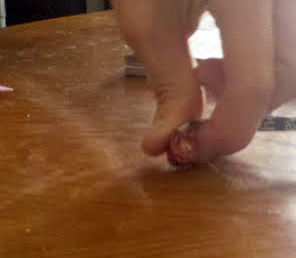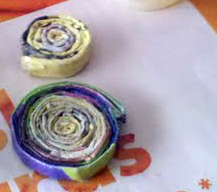I thought this was pretty cool. And would like to make one some time.
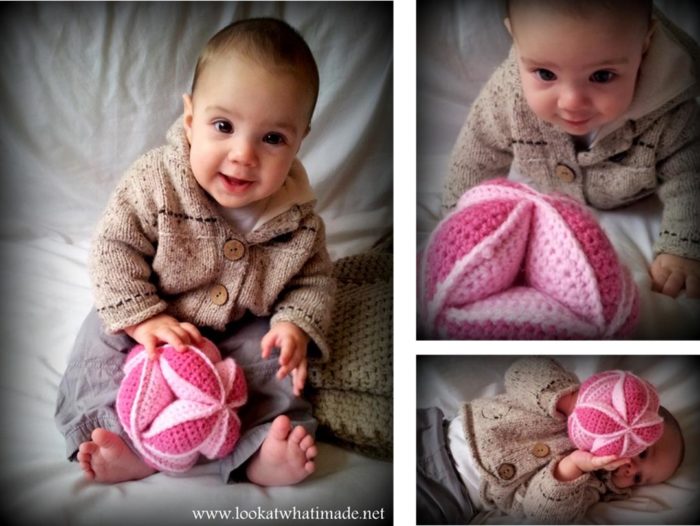
Let
me introduce you to my Crochet Amish Puzzle Ball. I can hype it up and
tell you that your kids will have endless hours of fun playing with
this puzzle ball, but the truth is that I have a lot more fun with this
puzzle ball than my kids do (although they love it).
The
minute someone walks into my house I practically force it on them! And
what fun it is watching people try to assemble it. Of course it only
takes them a little while to figure it out, because it IS pretty simple. But doesn’t it look cute? And as a ball it kicks some serious crochet ass!
The chunky design
means that it is super easy for little hands to grab hold of. And the
million colour possibilities make it a treat for little eyes and
inquisitive minds.
Now before we go any
further. If you are at all concerned about the apparent amount of
sewing involved, let me put your mind at ease. All the segments are
crocheted together at the end and the tails of yarn are enclosed INSIDE
the ball – if you follow my advice, leaving you with 3 tiny tails of
yarn to sew away. That’s right, ladies! 3 itty bitty bouts of sewing.
I think that’s pretty awesome!

How does the Crochet Amish Puzzle Ball work?
The
ball comes apart into three separate “rings/segments” (each containing
four wedges) which then have to be re-assembled to form the ball.
You
will need to make 12 of the same thing. So I would advise resigning
this particular project to evening tv time (if you indulge) and car
trips.
(Update 3/3/13: It takes me about 3 lazy hours to make a Crochet Amish Puzzle Ball from scratch, but I have made a few!!)
Crochet Amish Puzzle Ball Pattern
Dedri Uys ©2011. All Rights Reserved.
This pattern is not currently available as a PDF. I am in the process of updating my older pattern PDF’s.
Size
- If you prefer to use double knit yarn and a 4 mm hook, the ball will be roughly 13 cm in diameter. That is about 5”.
- If you use worsted weight yarn and a 4 mm hook, the ball will be about 15 cm in diameter. That is about 6”.
Materials
Update: I have recently started working with worsted weight yarn and much prefer the denser structure obtained when using worsted weight yarn. The ball below is made with the materials listed below, but I suggest you use worsted weight yarn instead of double knit! If you do use worsted weight, you will need about 220 meters.- 4 mm Crochet hook (US G/6 UK 8)
- Double knit yarn (light worsted weight/#3) in contrasting colours – about 120 m for the wedges, 45 m for the lids and 30 m for crocheting the lids to the wedges.
- OR Worsted weight yarn (Aran/#4) in contrasting colours – about 140 m for the wedges, 55 m for the lids and 35 m for crocheting the lids to the wedges
- A yarn needle for working away your tails of yarn
- About twice as much stuffing as you think you will need
Abbreviations
US Terminology used{You can see a US/UK comparison chart for hooks and terminology here.}
| Ch | Chain |
| Sl st | Slip stitch |
| Sc | Single crochet |
| Sc inc | Single crochet increase |
| St/st’s | Stitch/stitches |
Additional Notes
The initial ch st’s in each row/round are NOT counted as stitches.Instructions
Wedges
(Make 12)
These wedges are worked in rows and joined with a seam. If you would rather make seamless (spiral) wedges, see the instructions for the Star Ball.Ch 2. Make 3 sc’s in the second ch from the hook. Ch 1 and turn. (3)
- Sc inc in each st. Ch 1 and turn. (6)
- (Sc inc in the next st, sc in the next st) 3 times. Ch 1 and turn. (9)
- (Sc inc in the next st, sc in the next 2 st’s) 3 times. Ch 1 and turn. (12)
- (Sc inc in the next st, sc in the next 3 st’s) 3 times. Ch 1 and turn. (15)
- (Sc inc in the next st, sc in the next 4 st’s) 3 times. Ch 1 and turn. (18)
- (Sc inc in the next st, sc in the next 5 st’s) 3 times. Ch 1 and turn. (21)
- (Sc inc in the next st, sc in the next 6 st’s) 3 times. Ch 1 and turn. (24)
- (Sc inc in the next st, sc in the next 7 st’s) 3 times. Ch 1 and turn. (27)
- (Sc inc in the next st, sc in the next 8 st’s) 3 times. Ch 1. Do not turn. (30)
To eliminate the final tail of yarn, insert your hook into one of the stitches at the pointy end of the wedge (from the inside of the wedge to the outside – see Photo 5) and pull the final tail of yarn through to the inside of the wedge (Photo 6).
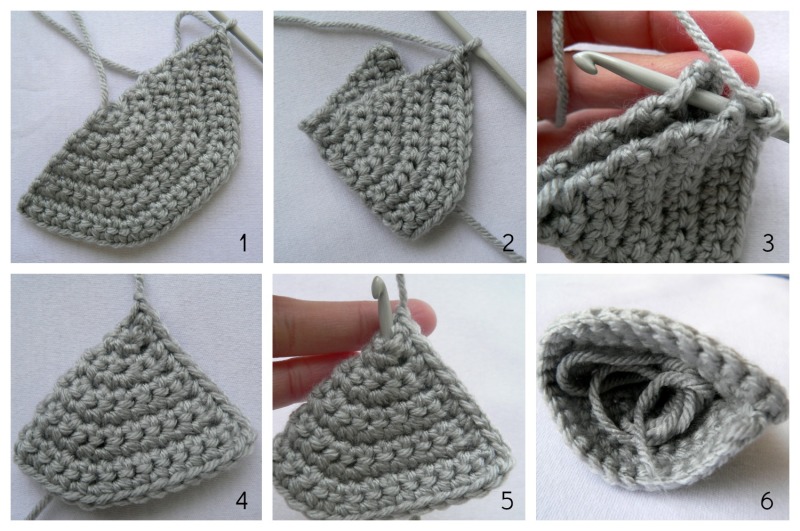
If you want to, you can turn the resulting wedge inside-out so that you don’t end up with a seam. I personally prefer (and recommend) the seam as it helps the Puzzle Ball to interlock better when assembled.
Chain of “lids”
(Make 3)
1. Ch 2. Sc inc in the second ch from the hook. Ch 1 and turn. (2)2. Sc in each st. Ch 1 and turn. (2)
3. Sc inc in each st. Ch 1 and turn. (4)
4. Sc in each st. Ch 1 and turn. (4)
5. Sc inc in the first st. Sc in the next 2 st’s. Sc inc in the last st. Ch 1 and turn. (6)
6-9. Sc in each st. Ch 1 and turn. (6)
10. Sc2tog, sc in the next 2 st’s, sc2tog. Ch 1 and turn. (4)
11. Sc in each st. Ch 1 and turn. (4)
12. Sc2tog twice. Ch 1 and turn. (2)
13. Sc in each st. Ch 1 and turn. (2)
14. Sc2tog. Do not bind off.
Repeat rows 1 – 14 THREE more times. This will give you a chain of 4 “lids”. On the very last “lid” of the chain, ch 1 and bind off.
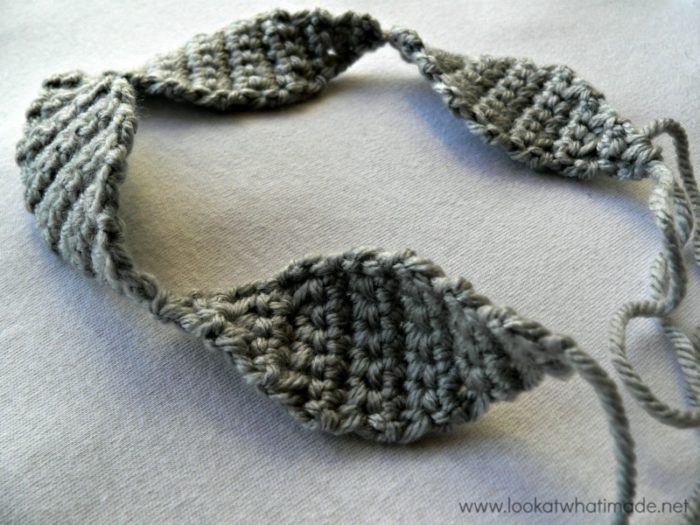
Hint: If you are going to use the “lid” colour (so the same colour) to attach the wedges to the lids, don’t bind off. Just continue with the assembly instructions below. It just saves having to work away another tail of yarn.
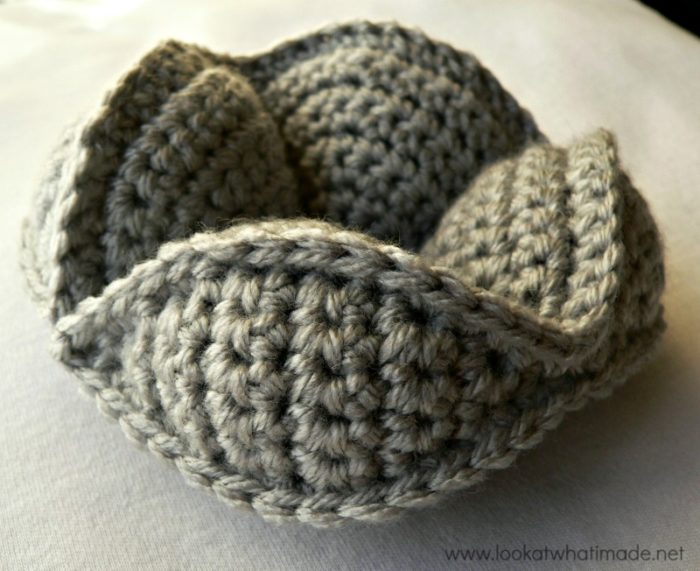
Assembling the segments
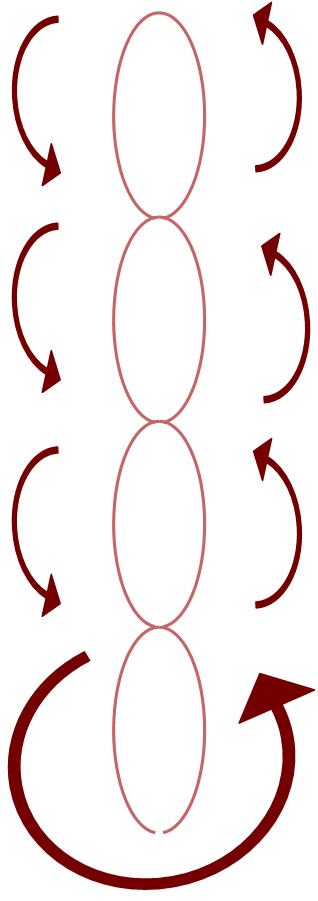
Use the yarn you used for the wedges or a third, different colour. If you are using a new colour, start with a slip knot already on your hook.
You will be attaching 4 wedges to each chain of lids, working up the chain of lids on one side and down the other side, stuffing as you go. You will be working into each st of the wedge opening and each row of the chain of lids. See the section below if you are unsure about the placement of the stitches in the rows of the lids.
So, place your first wedge behind the first lid on the right (with the sc seam of the wedge to your right – see Photo 1) and insert your crochet hook through the first st of the chain of “lids” and the first st of the opening of one of the wedges (Photo 2). If you have turned your wedge inside out, or you have worked it in a spiral, start on any st around the top of the wedge. Make a sc through both layers. Make 14 more sc’s, working into each row of the lid and each stitch of the wedge (so both layers).
Join the next wedge to its lid in the same way (Photo 3) and continue until you have attached one side of each of the 4 wedges and lids.
Now you will be “closing” the wedges. Insert your hook into the same (last) st of the fourth lid and the next st of the fourth wedge and make a sc. Continue working through both layers as before, making 15 sc’s along the other side of each wedge and lid (Photo 5), and stuffing as you go (see A Word About Stuffing below).
When you reach the last st, of the first wedge, join to the first st with a sl st and bind off. Use the tail to join the tips of the first and last wedges together (Photo 6).
Alternatively you can sl st them together before binding off, which is what I prefer. To do that, simply sl st in st’s 16 and 15 of the st’s around the top of the 4th wedge (in that order), so the stitches at the pointy end, and then sl st in the first and second st’s of the first wedge. Bind off and work away your tails.
You have now completed one segment. Repeat for the remaining 2 segments.
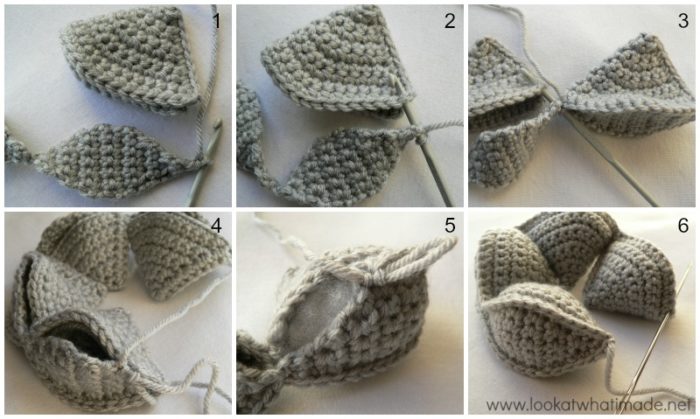
Having trouble lining up the lids and the wedges?
Although the lids only have 14 rows, there are 15 “holes” along the side of the lid. This is because the chain st you work the sc inc into in the first row also forms a hole. So, in essence, you are working into that ch st and then into each of the 14 rows. I have included a numbered photo below to help explain this. It is numbered starting from the sc2tog of row 14 ( on the right), where you will start attaching the lid to its wedge, through to the initial ch st of row 1 (on the left), and then back again around the bottom of the lid. I hope this eliminates a few questions.A word about Stuffing
This ball EATS stuffing! And I have noticed that people tend to think they have overstuffed the ball because the wedges are quite fat and the segments super snug…But the ball will stretch over time and to get the best results you want to stuff it nice and full! If you use too little stuffing the segments won’t sit together as well and the ball is more likely to become lifeless after a lot of playing. Just don’t stuff it so much that it becomes “holey”.Building your Crochet Amish Puzzle Ball
When your segments are all nicely stuffed and neatly finished off, use them to build your puzzle ball!Now, because this is a puzzle, I am not going to explain how you assemble the ball. But I have included a photo of how the first 2 segments should interlock and a photo of what the ball should look like once assembled.
All you have to do is figure out where the third segment goes. If you really get stuck, Google it :)
Crochet Amish Puzzle Ball Video Tutorial
by Elizzza from www.knitaholics.com
This
video tutorial should answer any questions you may have. Please note
that Elizzza turns her wedges inside out before attaching them to the
lids. I prefer not to turn them inside out. Keeping
the seam on the outside makes it easier to attach the wedges to the lids
AND it helps the wedges interlock slightly better when the ball is
assembled.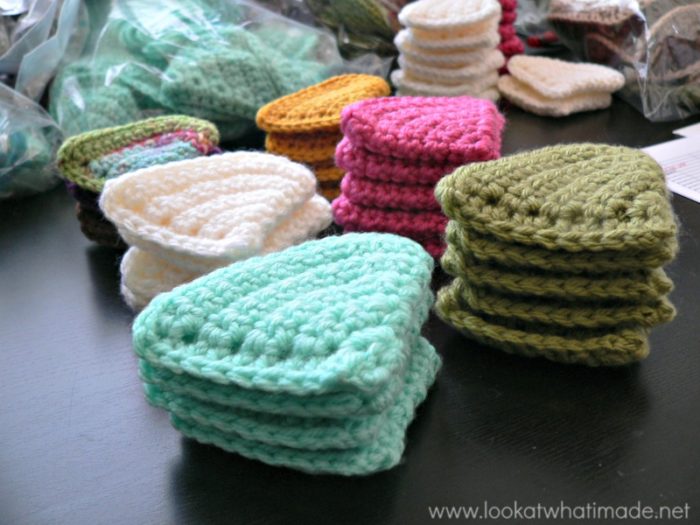

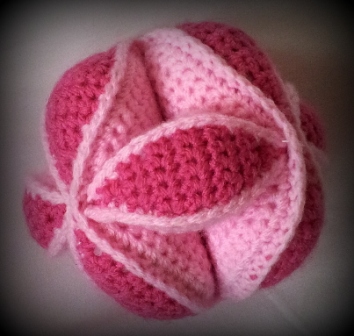
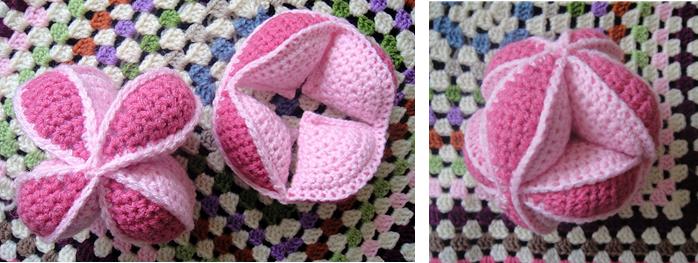

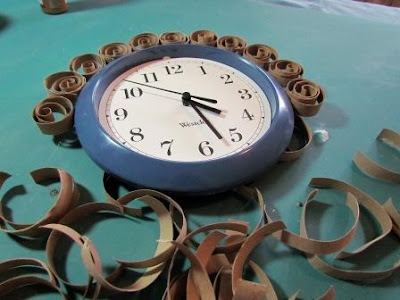
 Keep adding sprails to get the shape you want.
Keep adding sprails to get the shape you want.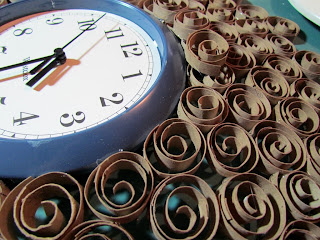 Added layers around the clock for more depth.
Added layers around the clock for more depth. For the lager curels I used strips cut from the cereal box. Now it is ready for painting, I removed the clock hands and the paper that covered the face of the clock.
For the lager curels I used strips cut from the cereal box. Now it is ready for painting, I removed the clock hands and the paper that covered the face of the clock.
